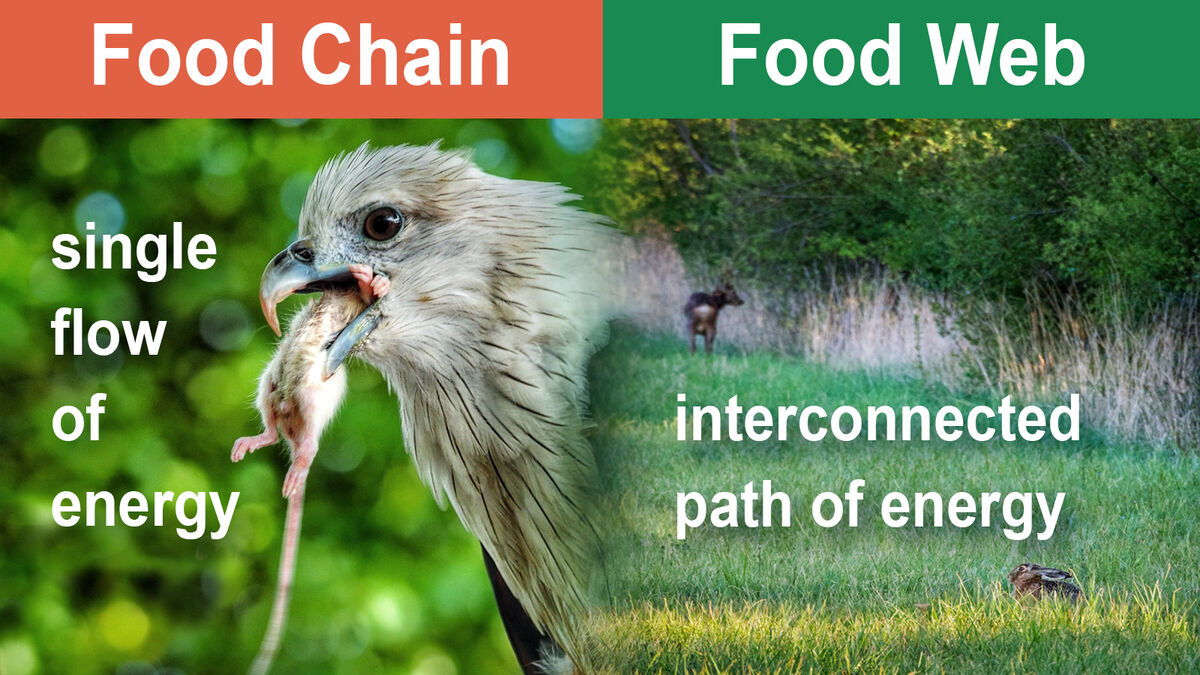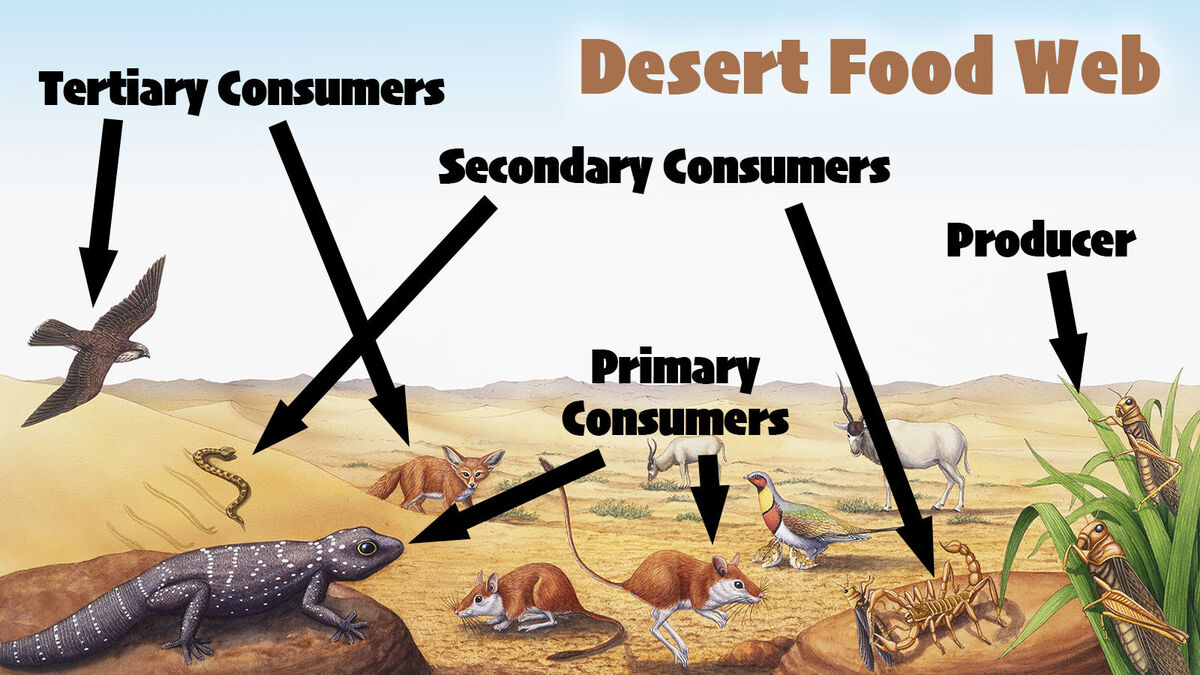
Food chains and food webs are easy to get confused since they both show the movement of energy through an ecosystem. But, while a food chain only shows a singular path, the food web shows how the paths are connected. Learn other differences between a food chain and a food web by looking at each one. Get examples of how a food chain and food web work.
What Is a Food Chain?
Before you can understand the movement of a food web, it’s important to look at a food chain. In the simplest terms, a food chain shows you the movement of energy from producers to consumers. For example, a plant uses photosynthesis to make energy. The plant is then eaten by a worm. The worm is then eaten by a bird. This is a simple food chain.
- plant - worm - bird
A food chain can be longer or shorter, but it only follows a simple, linear series of steps of energy from the producer to the consumers that eat it. Food chains typically end at the top predator, but can include the decomposers, which break down the top predators and start the chain over again.

Types of Food Chains
Food chains happen in all ecosystems. However, the type of producers and consumers vary. For example, a food chain in a forest ecosystem is different from a food chain found within a pond ecosystem.
Example of a Food Chain
Since it can be easier to see a food chain in action, view these food chain examples.
- plants - deer - humans
- grass - goats - tigers
- flowers - mice - snakes - eagles
- grass - rabbit - fox - coyote
What Is a Food Web?
While a food chain follows a singular path of energy from a producer to a top predator, food webs illustrate the ways different animals are interconnected and interact in a food chain. For instance, there are several predators that can eat a mouse or rabbit. It also explores the different paths energy can take within an ecosystem.
For example, phytoplankton can be eaten by primary consumers like small planktivorous fish, benthic invertebrates, and bivalves in a bay ecosystem. Small planktivorous fish can then be eaten by secondary consumers, including gulls, wading birds, and large fish. Those large fish can then be eaten by the tertiary consumer, bald eagle.
As you can see the flow of energy doesn’t just follow a simple line, it moves and loops. Therefore, it becomes convoluted easily. However, food webs break down how animals and trophic levels interconnect.

Food Web Examples
In food web examples, it can be hard to follow the flow of energy without a visual because each different ecosystem has multiple producers and consumers. For example, a food web of a forest would include:
- Producers: seeds, plants
- Primary consumers: rabbits, deer, squirrels, birds
- Secondary consumers: fox, hawk
How the energy weaves through the web depends on what eats what.
Difference Between a Food Chain and a Food Web
Get a simple breakdown of the differences between a food chain and food web through a quick table.
Food Chain | Food Web |
Linear feeding hierarchy, following a single flow of energy | Graphical model following the interconnected path energy takes in an ecosystem |
Single unit | Multiple interconnected pathways |
Includes 4-6 trophic levels | Multiple trophic levels |
Predators only feed on one specific consumer | Predators feed on multiple consumers |
Food Chain vs. Food Web
When it comes to which is more useful, a food chain or a food web, both a food chain and a food web serve a specific purpose in understanding an ecosystem. Therefore, both are useful depending on what you need. If you are trying to understand the flow of energy through trophic levels, you might want to look at a food chain. However, if you are trying to understand the way animals interact and connect through an ecosystem, a food web is more helpful.
Food chains and webs can be interesting. However, keep your knowledge of animals in top shape by looking at examples of omnivores.